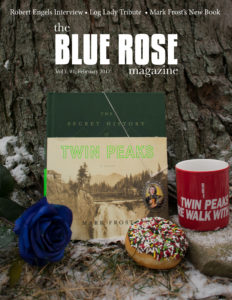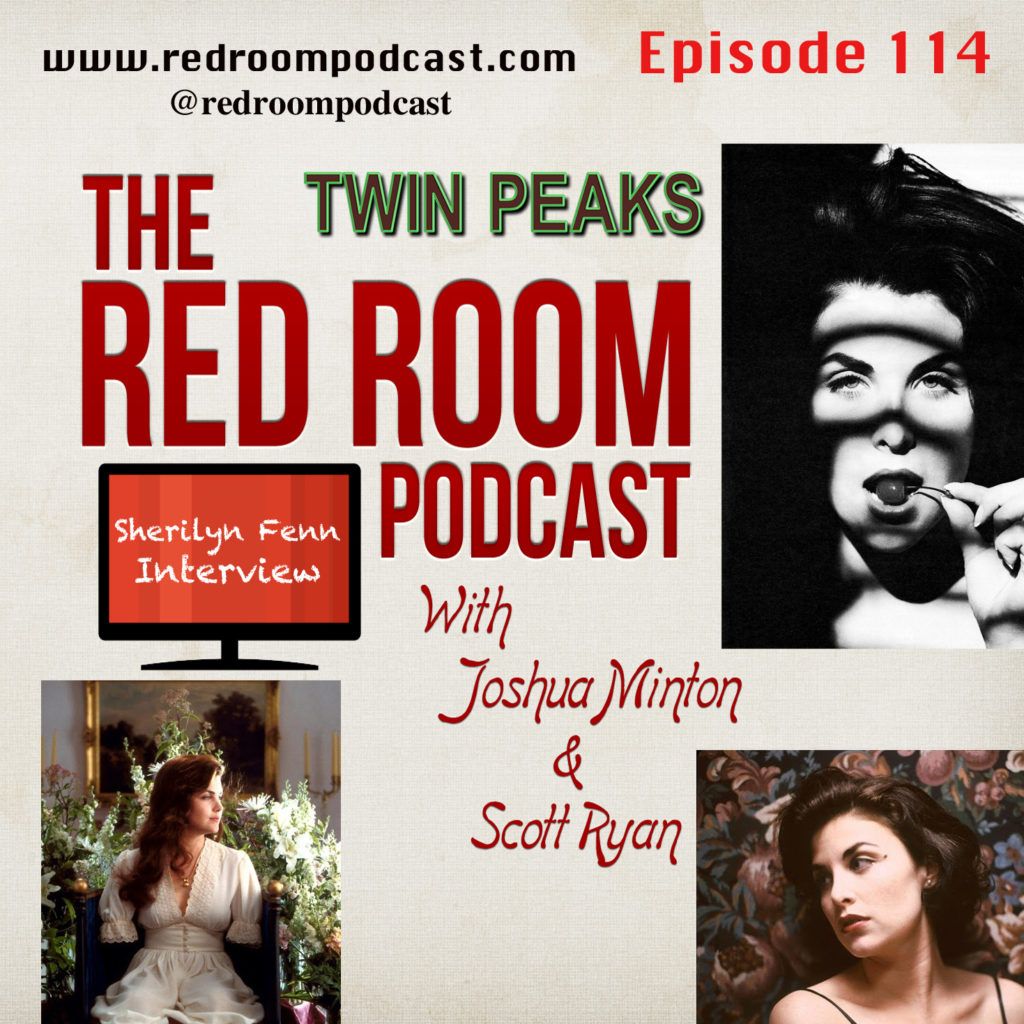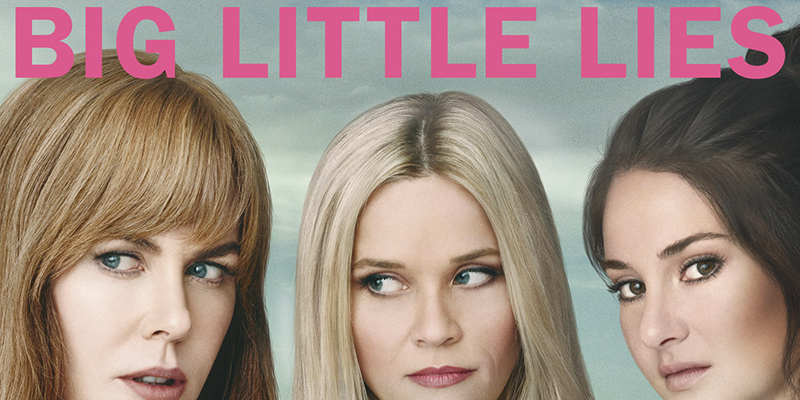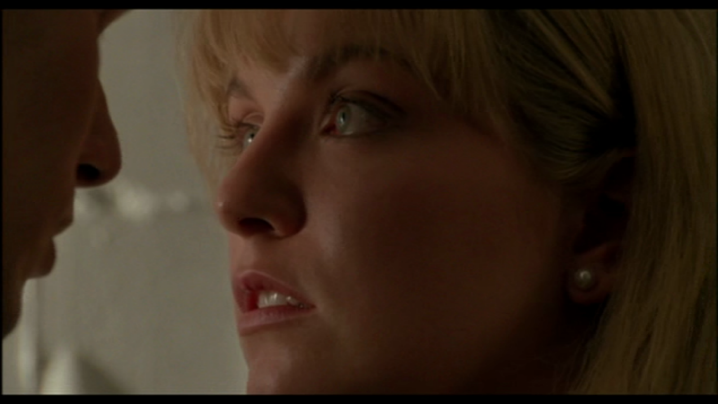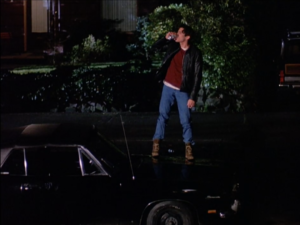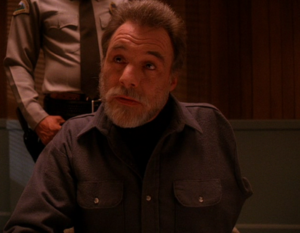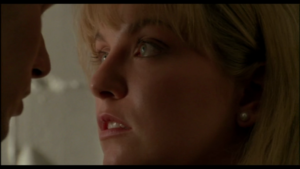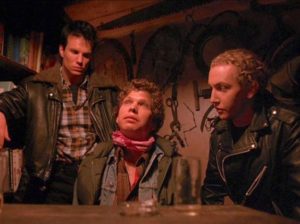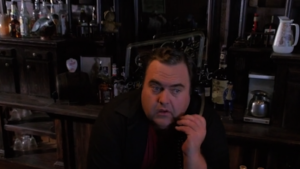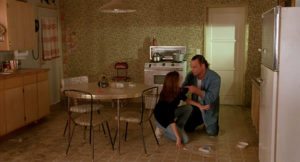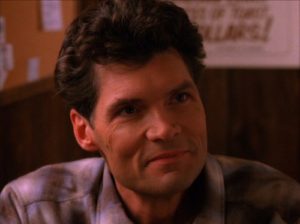Written by Courtenay Stallings
“I want all my Garmonbozia,” said The Man From Another Place. Well, “Twin Peaks: Fire Walk With Me” sure delivered plenty of pain and suffering. The world of the film “Fire Walk With Me” is nothing like the world of the television series “Twin Peaks.” Not that it should be anyway. FWWM is Laura Palmer’s story – the story of her last days. The film resonates with the trauma and exclusion Laura is experiencing. The first part of the film is the story of the death of Teresa Banks, but we soon discover that Banks and Palmer have an unusual connection. His name is BOB.
Sunday marked the eighth and last day of the USC Twin Peaks Retrospective. Tonight featured a screening of the prequel/sequel “Twin Peaks: Fire Walk With Me.” FBI Agent Gordon Cole (David Lynch) charges agents Chester “Chet” Desmond (Chris Isaak) and Sam Stanley (Kiefer Sutherland) to travel to the town of Deer Meadow and investigate the murder of Banks. It will be a tricky investigation as the sour-faced dancing Lil points out: there are problems with the local authorities, trouble higher up, a lot of leg work involved, drugs involved, and something more mysterious … indicated by the blue rose. The town of Deer Meadow is the negative of Twin Peaks. The men and women who work at the Sheriff’s station are corrupt and callous, Hap’s is certainly no RR Diner (I mean, did you see that neon sign of the crying clown?!), and Banks was no homecoming queen. Agent Desmond’s journey down the rabbit hole searching for the blue rose causes him to disappear – but to where? Then the film takes us to Philadelphia. Cooper experiences a strange encounter with the phantom Agent Jeffries (David Bowie).Cooper travels to Dear Meadow to investigate the disappearance of Agent Desmond. Cooper is unsettled and is positive the killer will kill again – but this time it will be a blonde school girl. Cue Laura Palmer walking down the tree-lined streets of her suburban Twin Peaks neighborhood. Popular, beautiful, and sweet: Palmer is all of these things but so much more. Too much more. Laura is slipping down the slippery slope of self-medication and escapism, finding solace in cocaine, alcohol and sex. The abuse by Bob is too much bear, and now he is getting inside her head. He wants to be her. Laura slips into the shadows with Bob, and he carries her off to the boxcar of her death. But, in the end, we know that Laura is going to be OK. She has two guardian angels watching over her in the waiting room of the Red Room – the guardian angel of her dreams and Special Agent Dale Cooper. Laura is saved. Her smile says it all. The end.
After the screening, Ray Wise (Actor, “Leland Palmer”) – who was seated in the front row during the screening – stood up, faced the audience and said, “Well, that was exhausting.” The crowd roared and gave him a standing ovation. Then, the panel entered the stage. This week’s panel included actors from the TV series and film and the co-writer. Unfortunately Sherilyn Fenn and Miguel Ferrer could not attend the panel.
- PHOEBE AUGUSTINE (Actor, “Ronette Pulaski”)
- IAN BUCHANAN (Actor, “Dick Tremayne”)
- BOB ENGELS (Co-Writer)
- SHERYL LEE (Actor, “Laura Palmer”/”Madeleine Ferguson”)
- JENNIFER LYNCH (Author, The Secret Diary of Laura Palmer)
- JAMES MARSHALL (Actor, “James Hurley”)
- RAY WISE (Actor, “Leland Palmer”)
Alex Ago (Moderator) began the discussion by asking the panelists how they became involved in “Twin Peaks.”

James Marshall (Actor, “James Hurley”) said he was young and having fantasies about owning a Harley Davidson motorcycle. He started to get nervous because he wasn’t getting enough auditions. He was approached about doing a project involving a “Harley guy” and David Lynch. Perfect. Marshall said when he met with Lynch, David said, “You know, basically, James, I’m pretty sure you’re it.” Marshall said Lynch “took the nerves right out of” the situation. But Marshall didn’t tell anyone he was involved until it was official.
Marshall said he grew up in New Jersey, which was similar to the Northwest. He said, David Lynch’s “take on life is weird because life is weird.” When asked what it was like to play a “bad boy” who was actually good, Marshall said when he grew up the bad boy was actually the popular guy wearing the letterman’s jacket who was bad because he was the one who committed date rape. However, the long haired guys who didn’t look normal were actually the good guys.
Marshall said Lynch rarely gave direction – he would simply coax. He described an emotional scene he was performing with Lara Flynn Boyle. Lynch wasn’t getting what he wanted out of the scene, so he got down on his knees with his head pointed down and put his arms in the air and rubbed his fingers together. He did this for about three minutes. Finally, he stood up and said, “Go for it, James.”
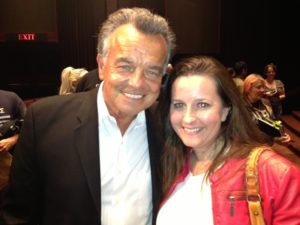
Ray Wise (Actor, “Leland Palmer”) said when he was sent the script for “Northwest Passage,” which became the pilot for “Twin Peaks,” he thought he was going to play Sheriff Harry Truman. (Everyone in the audience laughed at this idea.) Wise said when he met with David Lynch, they talked about their first cars – Wise’s was a 1950 Alpha Romeo, and he thought Lynch’s was a Volkswagen. They also talked about actors and people they knew in common. When he found out he was playing Leland Palmer, he read the script again and discovered the character he was going to play was a “big cry baby.” That was his initial reaction to playing Leland, but Wise said Leland Palmer was “the greatest character I’ve ever had the pleasure of playing.”
Wise said he was “fooled by everything and everybody. I thought Leland was a good guy who loved his wife and daughter. I didn’t know I was going to be the killer of my own daughter.” Wise said he had a baby girl who was born in 1987 – a few years before the show aired. He said, “The whole idea about being the killer of your daughter did not sit well with me.” Wise said Sheryl Lee (Actor, “Laura Palmer”) gave him a picture of herself when she was in the third grade. He kept it in his “Leland” wallet throughout the series.
When Wise found out his character killed Laura Palmer, he was in a room with David Lynch, Mark Frost, Sheryl Lee and Richard Beymer. In his finest David Lynch impression, Wise said that David told him, “Ray, it’s you. It’s always been you.” Wise told David, “No!” But Lynch tapped Wise on the knee and told him, “But it’s gonna be a beautiful thing.” Lynch told Wise he would die in Cooper’s arms while Cooper recites from the Tibetan book of the dead. In the end, he’ll reunite with his daughter Laura, who forgives him, in heaven. Richard Beymer was in the room during the reveal to Wise because Beymer’s character of Ben Horne was one of three possible identities for the killers of Laura Palmer. This was done in order to throw off the crew and public. Wise said there were several scenes in which Sheryl Lee had to be “killed” – by Leland, by Ben Horne and by BOB. Even the crew did not know the actual killer.
Wise said the murder scene in the boxcar was very intense and an “amazing thing.” He said he likes to think of it “like a religious experience of the entity taken over.” It was his way of justifying the actions of BOB in that moment.
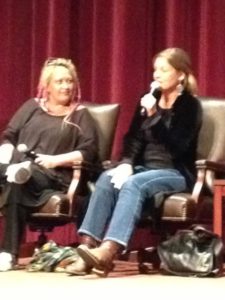
Ian Buchanan (Actor, “Dick Tremayne”) said he had worked with David Lynch on a commercial for Obsession for Men – a cologne by Calvin Klein. The commercial also featured Lara Flynn Boyle (Actor, “Donna Hayward”). David Lynch told Tremayne on the set of the commercial, “You’d make a good Dick!” Tremayne was taken aback until he found out that Lynch wanted him to play the pompous department store employee Dick Tremayne.
Buchanan said he felt like he was on a different show because he never had access to a script – just a few pages with his lines. He said he was always wearing a “plethora of plaid.” He recalled going to the make-up room and there would be these “buckets of blood and fingernails. I had no idea what was going on.” When asked if he developed a backstory regarding Dick Tremayne, Buchanan said he assumed Dick was “impersonating everyone he saw on TV or screen.”
Jennifer Lynch (Author, The Secret Diary of Laura Palmer) said she became involved with “Twin Peaks” after a call from her father, David Lynch. Lynch asked Jennifer if she remembered a conversation they had when Jennifer was only 12. Jennifer told her father that she really wanted to steal another girl’s diary. She said, “I wanted to know if she was scared of the same things I was, if she yearning for the same things I was.” Jennifer Lynch said, “Like all other adolescent girls, I was afraid.” During the phone call, David Lynch asked his daughter, “Jenn-O, would you like to write Laura Palmer’s diary?” Jennifer said, “Fuck yeah I would!” Lynch said she became one of only three breathing mammals who knew the killer of Laura Palmer at the time.
Lynch said that the story of Laura Palmer is “perhaps the most real story about child abuse ever made. This was so eloquent.” Alex Ago said he saw the film as a child with his mother and his mother said it was “the most insightful film about child abuse.” I think this is a crucial reason why the film resonates with so many people — the story of Laura Palmer shows the horrors of abuse but also reveals the strength and perseverance of the victim.

Sheryl Lee (Actor, “Laura Palmer/Madeleine Ferguson”) responded to Jennifer Lynch’s story. Lee said, “I, too, had the same tears and confusion and pain, and I am grateful for your words.” Lee said she became involved with “Twin Peaks” when David Lynch called her after seeing her photo. Lynch said Lee was “probably this dead girl.” Since Lynch didn’t audition his actors, he simply had a conversation with Lee. Lynch asked her how she felt about being wrapped in plastic, doused in cold water, and thrown into a river. Lee laughed, and said she was from Colorado, so she didn’t mind the cold. After she completed the pilot, Lynch called her several months later and asked her if she wanted to come back to the show. Lee was confused and said, “How? I’m dead.” But Lynch and others had tricks up their sleeves – Lee returned to play Laura Palmer’s sweet dark-haired cousin Madeleine “Maddy” Ferguson.
Alex Ago asked Lee if anything from the diary inspired her performance. Lee said she felt the character from the diary helped pull her through the performance. She said, “Sometimes it’s physical. Sometimes it’s intellectual. With Laura, it was raw emotion. Living with that – the shame, the secrets, the double life. It’s hard to talk about because I can still feel it. The rawness and the truth – the way Jen wrote that – it’s all there.” Lynch responded, “Yeah, but look what you did with it.”
Sheryl Lee described the incredible experience of working with David Lynch. She said he worked like a photographer or a painter in his attention to detail. She said, “It’s like he’s friends with the creative force, and the creative force steps in and plays with you.”

Phoebe Augustine (Actor, “Ronette Pulaski”) was a newlywed when she was cast in “Twin Peaks”, but her maiden name had still been printed on her headshots. She told David Lynch she wanted to use her married name for the series. Lynch asked her what it was, but when she told him, he said, “No. Phoebe Augustine looks better on the screen.” And so it was.
Augustine recalled the exhausting portrayal of Pulaski when her character was hospitalized. She recalled the orderlies holding her down. She said she kept bruising from the physicality of the scenes. Lynch told her, “I know this is really hard on you.” He then took a piece of gum and stuck it to the camera and told Augustine, “When we are done, you can have it.” Augustine laughed and said that was Lynch’s way of making her laugh and putting her at ease.
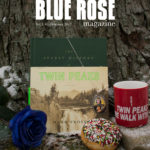
Bob Engels (Co-writer, “Twin Peaks: Fire Walk With Me”) was gracious to come to a second panel to discuss the film. He also attended the Feb. 10 retrospective. Engels discussed the creation and process of writing the script of “Twin Peaks: Fire Walk With Me” with David Lynch. Engels said when he and Lynch were working on a script called “In Heaven,” Lynch told him he wanted to make a “Twin Peaks” film. Engels and Lynch decided to write the film as a prequel and sequel to the television series. Engels said it was really an attempt to answer the question, “What else can we tell about this story?” Engels mentioned a lot of scenes that were cut from the script and film, including scenes in Argentina involving Josie Packard and Windom Earle. There was a whole 1950’s sequence of the inauguration of President Dwight D. Eisenhower that was cut. Shots of bugs crawling under a Formica table were removed. Engels said the process of writing with Lynch took some interesting turns because “you kind of go wherever you go. We would hit on something, and then we would do 10 pages of that.” Engels said the dreamlike sequence of everything allowed for the possibility of anything to happen, so it wasn’t unimaginable to tell the story of “Twin Peaks” going back to the 1950s or even the 1850s.
Regarding the knowledge of who killed Laura Palmer – Engels said he knew who the killer was in episode three. He said keeping the secret (or any secrets) about the show was difficult because the scripts were getting leaked. The National Enquirer was even getting access to scripts. Engels said they started numbering and tracing the scripts. It turned out that someone in the costume department was leaking the scripts.
Engels described the actual writing process with David Lynch. He would arrive at Lynch’s place at 3 p.m. and they would work until 6 p.m. Then, they would call it quits and drink wine with their wives, and he would go home. He would type and Lynch would stand behind him. Engels said the actual writing of the script only took about a week after they figured everything out. He and Lynch would act out the parts – Lynch would usually play the bad guys, and Engels the good guys.
Several of the panelists told stories about Frank Silva (Actor, “BOB”). Jennifer Lynch said Silva was “one of the most important people in her life. Frank turned me on to this apartment building. It was still the most beautiful apartment I’ve ever lived in. We made furniture together out of particleboard. We stayed up three days straight – sober – making furniture.” She said Silva was so kind he would “go to the other side of Mars to help someone.” Bob Engels acknowledged that Silva was not an actor so he had to be coached. Engels said Silva “couldn’t have been more opposite of what BOB was.” Marshall told the story of how Silva went from being a set dresser to becoming BOB – when Lynch recognized his potential while Silva was trying to stay out of a shot. Augustine recalled the scene in the pilot where she walks across the bridge after emerging from the death throes of Laura Palmer. She said the whole crew was standing at the end of the bridge as she walked toward them. She kept getting nervous and told Lynch there was one guy in the crew who was making her afraid but she wasn’t sure why. It was Frank Silva. When she asked Lynch who he was, Lynch said, “He’s the bad guy, but don’t tell anyone.”
 During the Q&A, Alex Ago asked Bob Engels how an angel found her way into the Black Lodge. Engels said, “Whenever you had to explain the rules of the Red Room to David Lynch, you were hitting a brick wall.” Sheryl Lee was asked if Lynch ever asked her to do something she couldn’t bring herself to do while playing Laura Palmer. She said, “Yes. It had to do with a pig’s head.” She explained that, “I trust David Lynch so much as a director. I was so young, but I felt so safe. He surrounds you with people who make you feel safe.” But there was one scene Lee couldn’t perform. Lee said they were shooting the bedroom scene in TP:FWWM in which she finds a bloody Annie Blackburn in her bed. She had a funny feeling that something was going on. People around her kept saying things like, “Is it here yet?” She found out they had brought an actual severed pig’s head from a butcher shop to cross-cut between the faces of BOB and Leland during the rape scene. It was too much for Sheryl Lee. Fortunately, Lee said, the DP told Lynch they couldn’t physically do the scene with the pig head due to technical reasons. Lynch eventually relented. Lee said despite this particular disagreement, she and Lynch had a great way of working. When she was confused, he would take her hand and lead her on a “walk-and-talk”. She said it was almost like he was hypnotizing her to create a mood. Phoebe Augustine also agreed that a majority of Lynch’s directing involved telling long stories to the actors right before a scene to set the “mood”.
During the Q&A, Alex Ago asked Bob Engels how an angel found her way into the Black Lodge. Engels said, “Whenever you had to explain the rules of the Red Room to David Lynch, you were hitting a brick wall.” Sheryl Lee was asked if Lynch ever asked her to do something she couldn’t bring herself to do while playing Laura Palmer. She said, “Yes. It had to do with a pig’s head.” She explained that, “I trust David Lynch so much as a director. I was so young, but I felt so safe. He surrounds you with people who make you feel safe.” But there was one scene Lee couldn’t perform. Lee said they were shooting the bedroom scene in TP:FWWM in which she finds a bloody Annie Blackburn in her bed. She had a funny feeling that something was going on. People around her kept saying things like, “Is it here yet?” She found out they had brought an actual severed pig’s head from a butcher shop to cross-cut between the faces of BOB and Leland during the rape scene. It was too much for Sheryl Lee. Fortunately, Lee said, the DP told Lynch they couldn’t physically do the scene with the pig head due to technical reasons. Lynch eventually relented. Lee said despite this particular disagreement, she and Lynch had a great way of working. When she was confused, he would take her hand and lead her on a “walk-and-talk”. She said it was almost like he was hypnotizing her to create a mood. Phoebe Augustine also agreed that a majority of Lynch’s directing involved telling long stories to the actors right before a scene to set the “mood”.
During the Q&A, Bob Engels revealed some crazy information about the One-armed Man and Mike. Engels said “Garmonbozia” referred to a far off planet made of creamed corn and all the evil entities of the Red Room were desperately trying to return there. Alex Ago said, “You just blew my mind.” He blew my mind, too. Still reeling. Engels also said the blue rose was a reference to Tennessee Williams’ play “The Glass Menagerie.” Engels also revealed when David Bowie says “Judy” in the film, it is a reference to Engels sister-in-law. Here’s the scene. Engels said Judy is his wife’s sister, and when you work on TV, you put in references like these in your scripts to give a friendly shout-out to your friends and family. Engels revealed David Bowie was included in the film because of David Lynch’s assistant Debbie Trutnik. According to Engels, she would always ask if they were going to write a part for David Bowie. They finally did.
Engels told a funny anecdote about Lynch. One day they passed by Alfred Hitchcock’s former office. They knocked on a door until an assistant opened it. Lynch told her, “ I have an appointment to meet Mr. Hitchcock in one hour.” He and Engels waited patiently in the lobby even though Hitchcock has been dead for years.
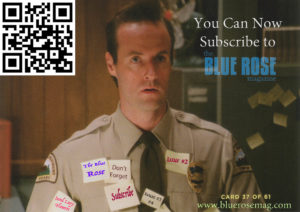 Someone asked James Marshall how he felt about his excursion to “Noir Town”. He said, “I didn’t like it. I didn’t think it was my place to say anything. I tried to push it gently. I thought the James/Donna thing was beautiful in their innocence, and I don’t know how you prolong that, but I would have preferred we explore that instead.” He always felt his character was a soulful person, and that his antics in “Noir Town” betrayed that.
Someone asked James Marshall how he felt about his excursion to “Noir Town”. He said, “I didn’t like it. I didn’t think it was my place to say anything. I tried to push it gently. I thought the James/Donna thing was beautiful in their innocence, and I don’t know how you prolong that, but I would have preferred we explore that instead.” He always felt his character was a soulful person, and that his antics in “Noir Town” betrayed that.
Alex Ago asked if there was ever any discussion about a third season or a sequel to “Twin Peaks.” Engels could not recall if there was. Ray Wise said that David Lynch used to tell him, “The town of Twin Peaks is still there…but you’re not.” Everyone laughed. Jennifer Lynch responded to this by saying when she heard about the rumors for a season 3 of “Twin Peaks,” she called David Lynch to ask if the rumors were true. Jennifer Lynch said, “He said no. From the horse’s mouth.” Her own thoughts about a season 3 were similar. “It should be where it is. It is a beautiful movie. I wouldn’t want to see new actresses try to be in that world.” So, this begs the question, what did Mark Frost mean when he said “Twin Peaks” is an ongoing story, and that comes from David, too? Perhaps Kyle MacLachlan’s quip from the last panel was correct – maybe “Twin Peaks” is a continuing story, but only in our heads. If so, I’ll take it. If Mark Frost and David Lynch want to continue the story of “Twin Peaks,” I’m in. If they don’t, I’m OK with that decision. At least I have two seasons and a film. The rest of the story can play out in my dreams.
Since this is the final retrospective blog, I would like to take this opportunity to thank Alessandro (Alex) Ago, the Director of Programming and Special Projects at the USC School of Cinematic Arts. Alex whipped up an amazing bevy of panelists for this retrospective, and he asked the questions we wanted to ask. He was an excellent moderator. I would like to thank Visions and Voices and USC School of Cinematic Arts for supporting this retrospective and other valuable programs. The retrospective was really a lesson in filmmaking – direction, working with people, writing, the art of cinema and the business. A big thank you goes out to all of the lovely “Twin Peaks” fans that I’ve met over these past few months. You are a special group. I’ve met some good friends – especially Michael, Dee and Joyce. I salute you. I’d also like to thank my husband, Bob Canode, who attended several of these events. He is my rock and a convert to the cult of “Twin Peaks.” Finally, I would like to thank Scott and Joshua from the Red Room Podcast. They are truly dedicated to intelligent discussions about film and television. I am honored to be one of their bloggers. Thus concludes the final panel of the retrospective. Remember, my friends, when this kind of fire starts, it is very hard to put out.
Subscribe to The Blue Rose Magazine. It is the only magazine dedicated to Twin Peaks. Courtenay Stallings is the Associate Editor of the magazine.

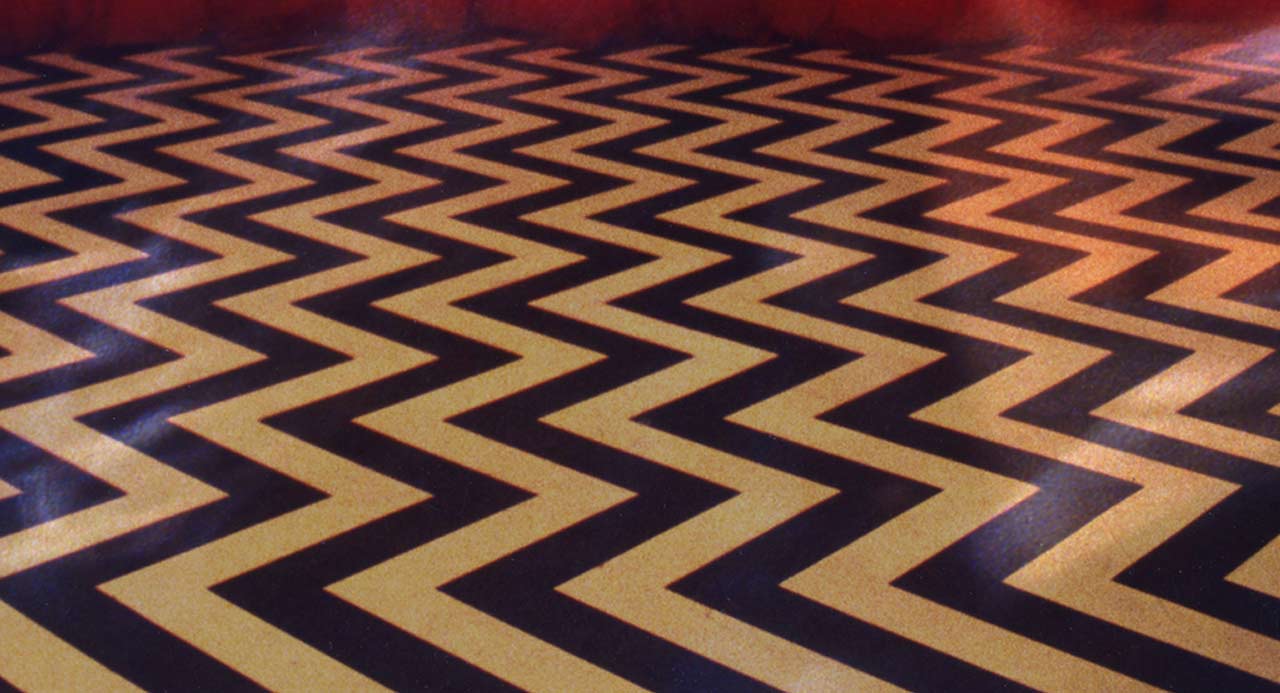

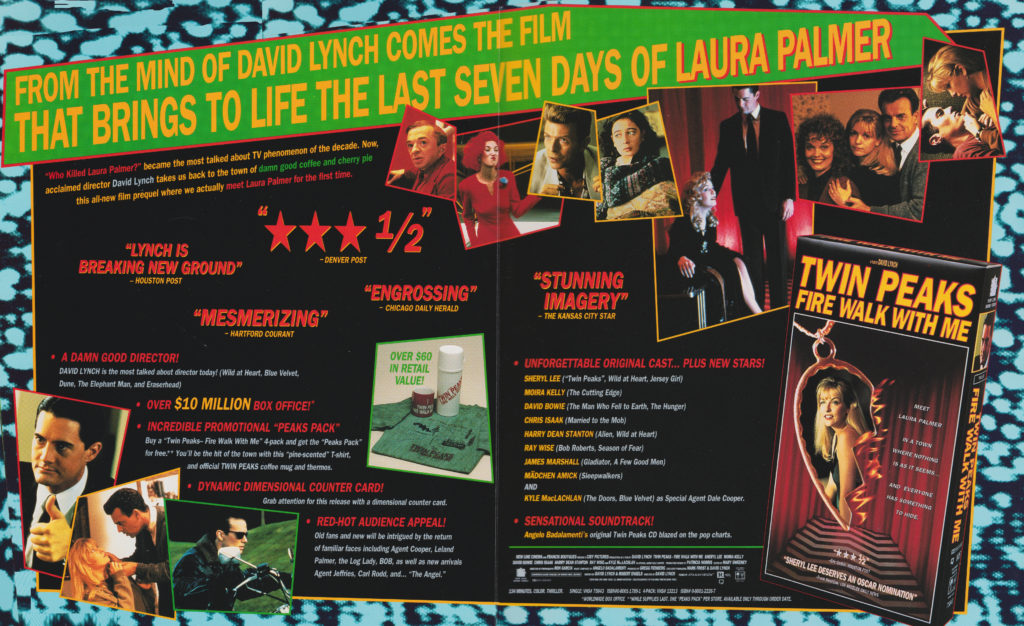
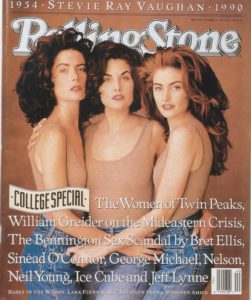 Only a few months later I had the Rolling Stone cover hanging in my room. There has never been a day since, that some piece of Twin Peaks art hasn’t hung on my wall. There isn’t a week that has gone by when I didn’t listen to Angelo’s music. I have travelled the world visiting filming locations and debuting
Only a few months later I had the Rolling Stone cover hanging in my room. There has never been a day since, that some piece of Twin Peaks art hasn’t hung on my wall. There isn’t a week that has gone by when I didn’t listen to Angelo’s music. I have travelled the world visiting filming locations and debuting 
